It’s not surprising that musculoskeletal disorders are one of the most common reasons for sickness absence in the NHS. Working across different environments while standing for long periods, stretching into awkward positions, and moving patients and equipment all takes a toll on your body. Recent research has highlighted that long working hours and inadequate staffing only increase the likelihood of getting injured.
We spoke to physiotherapist Kelly Kilmartin-Disson to find 5 simple exercises that can help prevent and reduce muscular discomfort. You can do these at work or at home, with zero equipment, all you’ll need is your own body weight.
Most nursing staff will experience muscular pain in their lower back, neck and shoulders. Stretching and strengthening the muscles in these areas will reduce injuries and ease pain. Plus, the extra movement will boost your mood and help to tackle feelings of stress and anxiety.
1. Squats
The simple squat can do wonders to improve and prevent lower back pain. It strengthens your lower limbs which help to support your back and will improve your flexibility too.
1) Stand with your feet hip width apart and keep your arms across your chest.
2) Keeping your weight on your heels, imagine you are lowering into a chair.
3) Using slow and controlled movements, move up and down.
4) Aim to do 3 sets of 10-15 squats, but you can start with fewer and build up if you’ve not exercised for a while.
5) You’ll feel this exercise work the muscles in your thighs and bottom.
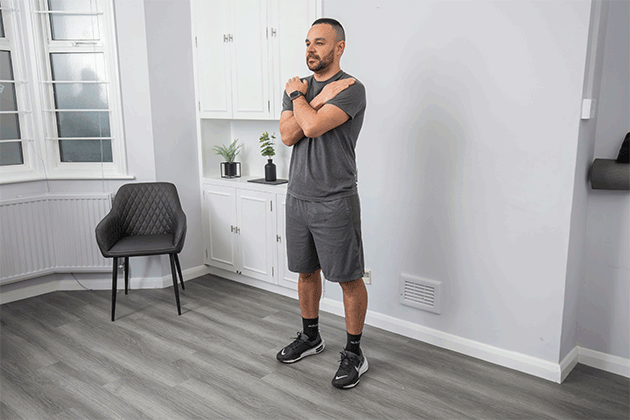
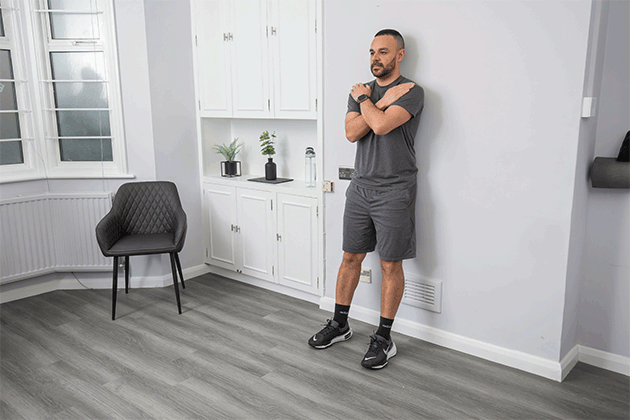
2. Wall push-ups
You won’t need to drop to the ground for this exercise – stay standing for this gentle alternative. All you need is a wall and your own body weight.
1) Stand a few feet away from a wall.
2) Place hands on the wall, slightly wider than shoulder width.
3) Move your upper body towards the wall, then gently push yourself away.
4) Aim to complete 3 sets of 10 wall push-ups.
5) You’ll feel this exercise work the muscles in your shoulders and upper back.
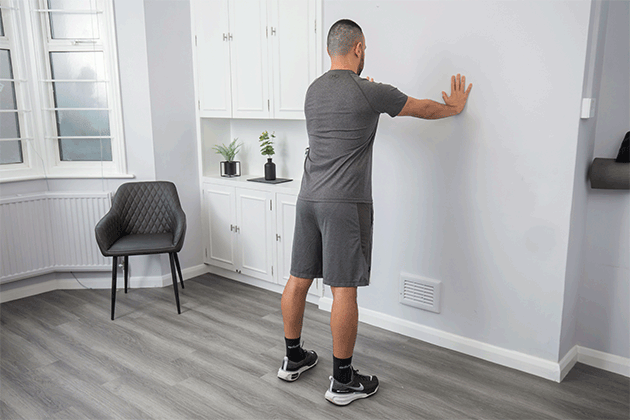
“To build muscle and start feeling stronger, you’ll need to do both of these strengthening exercises at least 3-4 times a week. If you can aim to do them every day – even better,” advises Kelly.
3. Side stretches
1) Stand with your hands by your side.
2) Reach down the side of your leg, as far as you can.
3) Hold this position between 15-30 seconds and repeat on the other side.
4) Repeat the stretch again if you feel you need to release more tension.
5) You’ll feel this stretch down the side of your lower back and waist.
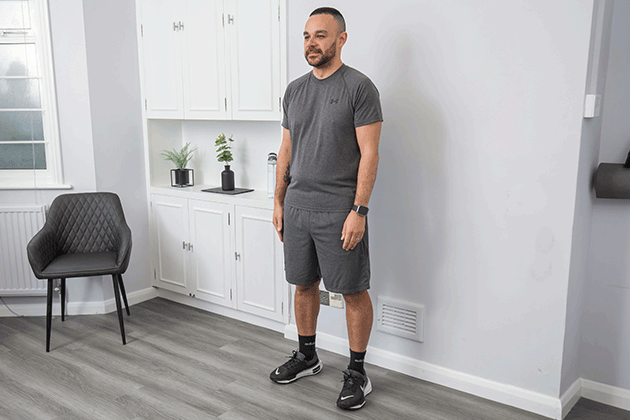
4. Seated glute stretch
If you’re feeling tightness in your back, hips or glutes, this gentle stretch will soothe those overworked muscles.
1) Find somewhere to sit down for this stretch.
2) Cross one leg over the other, making sure that your foot is on your opposite knee.
3) Lean into the crossed leg to apply some pressure.
4) Hold this position for 15-30 seconds, so you feel a good stretch.
5) You’ll feel this stretch muscles in your bottom.
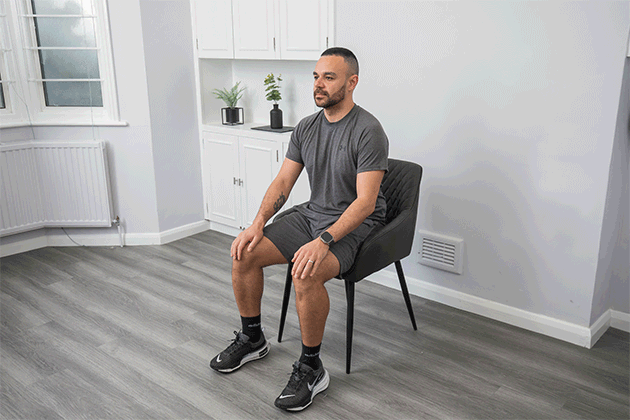
These stretches will lengthen the muscles and release tension whenever you’re feeling sore or stiff. Do these as often as you need.
5. Pelvic tucks and flicks
1) Stand with your feet apart and place your hands on your hips.
2) Imagine you have a tail, tuck it between your legs and stick your bottom out.
3) Now move your bottom round in circles – clockwise and anti-clockwise.
4) To get the most from this move, isolate the movement to the lower back only.
5) You’ll feel this movement in your lower back and spine
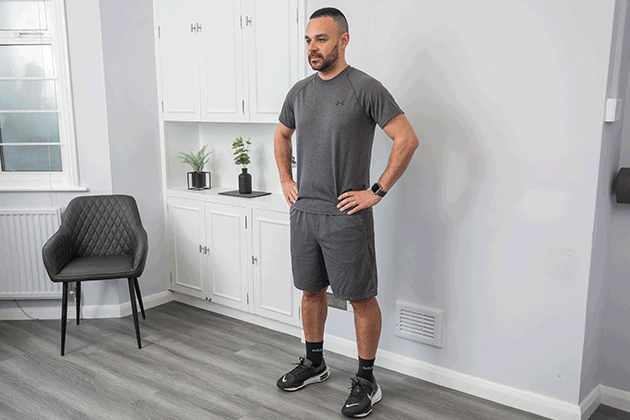
If you’re short on time, try breaking these exercises and stretches into smaller sessions throughout the day. If you find you have 2 minutes before or after your shift, that’s enough time to do a quick set of squats or a releasing side stretch.
Next steps
If you’re looking to extend these exercises, Kelly highly recommends trying Pilates or yoga to look after your long-term muscular health. “For anyone suffering with neck and back pain, I always advise trying Pilates. It helps build core strength, it’s great for improving posture and makes you more mindful of how you’re using your body day-to-day.”
Inspired to give it a go? There are plenty of free Pilates and yoga tutorials available online. Or log in to RCNXtra and sign up for free online classes every Thursday evening, including Pilates, yoga and dance.
Power in prevention
If you’re moving patients or equipment, it’s worth checking your manual handling technique and always utilise lifting aids. If you’re desk-based, make sure it’s ergonomically set up for your comfort.
Despite your best efforts, the demands of nursing may still lead to muscular injury or discomfort. RCN Health, Safety and Wellbeing National Officer Louise Church advises: “Employers have a legal duty to protect the musculoskeletal health of nursing staff by preventing the risk of injury, and support nursing staff with musculoskeletal disorders to prevent them from worsening and enable them to stay in work.”
Reach out to your occupational health team for guidance and head over to the Get Help section of our website for more support and advice.
Find out more
- Take a look at our guide on the correct moving and handling techniques and how to raise concerns.
- Read the RCN publication Working Towards a Healthy You for advice on looking after all aspects of your health.








